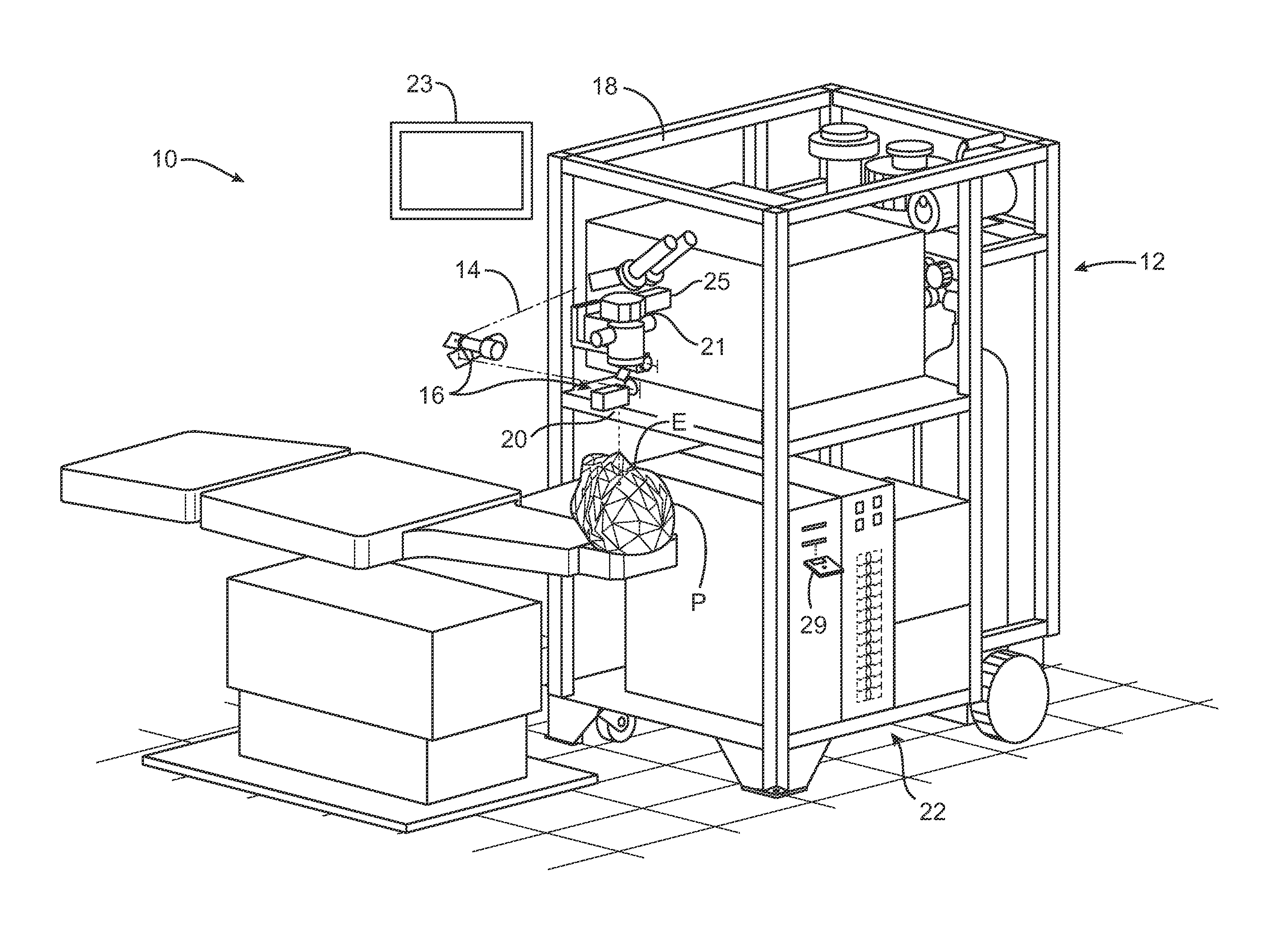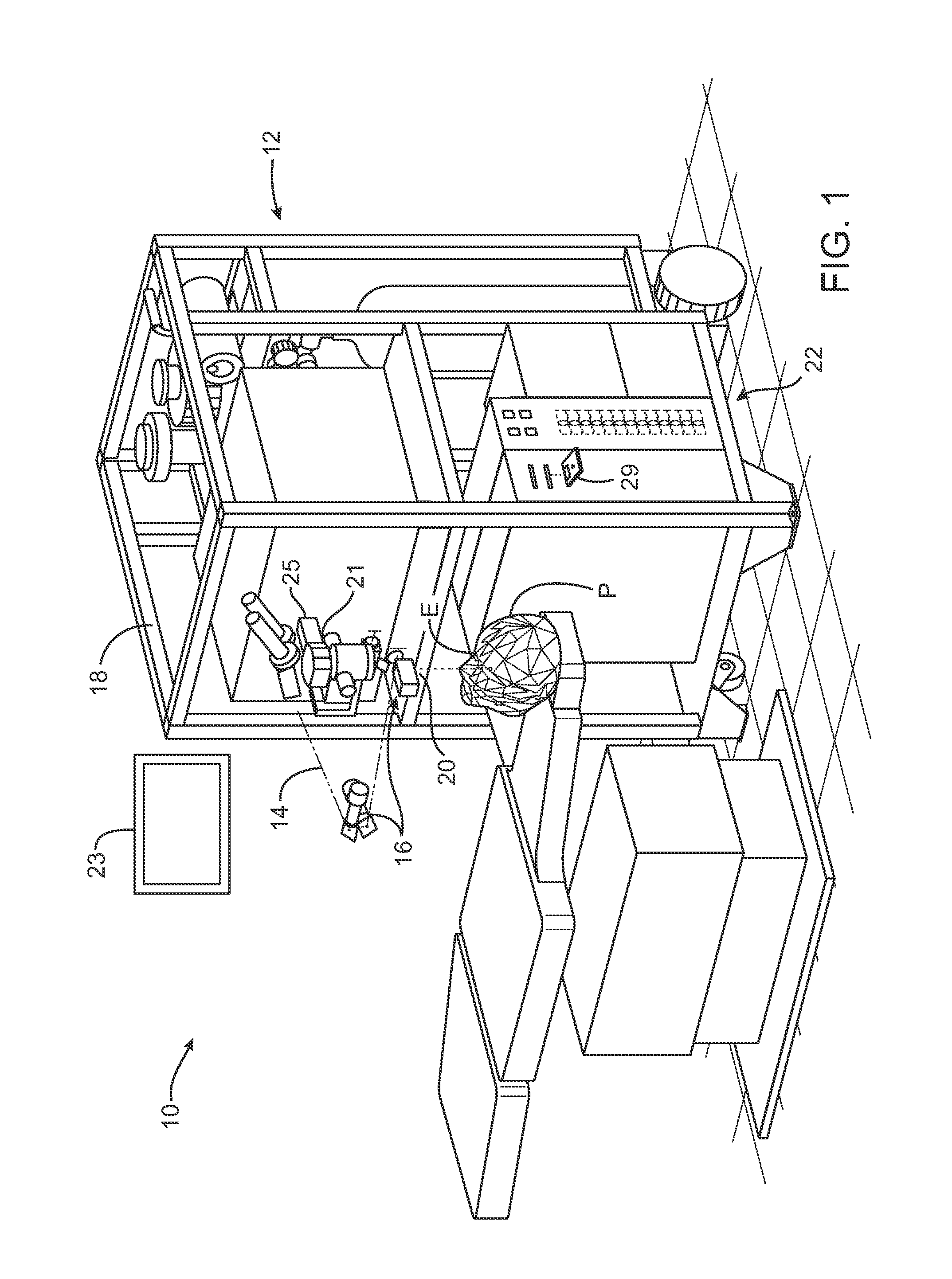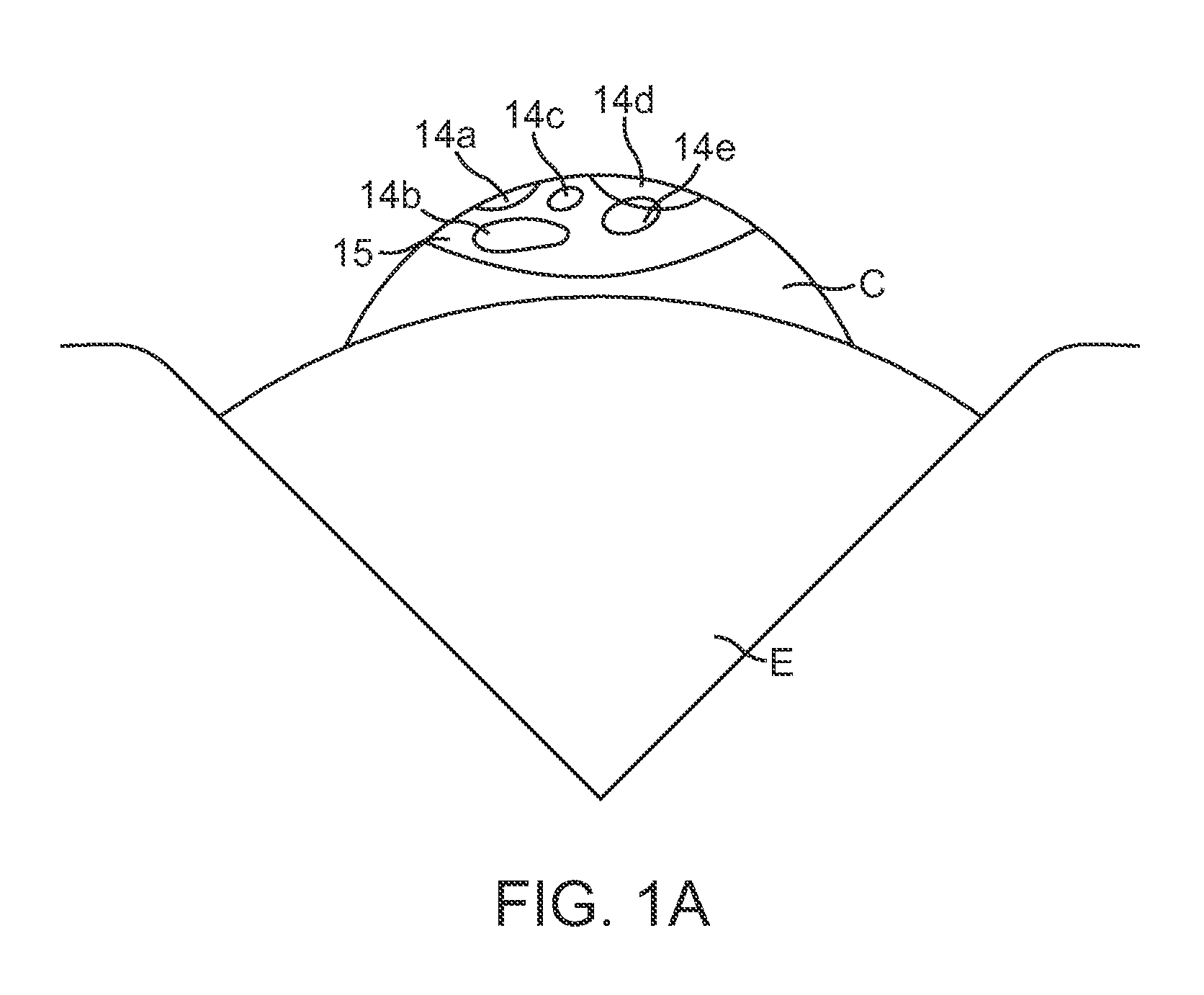Operator-Controlled Scanning Laser Procedure Designed for Large-Area Epithelium Removal
a laser and operator-controlled technology, applied in laser surgery, medical science, surgery, etc., can solve the problems of affecting and affecting the accuracy of laser eye surgery. , to achieve the effect of improving the accuracy and efficacy of laser eye surgery, improving the removal of the epithelium, and improving the accuracy of laser eye surgery
- Summary
- Abstract
- Description
- Claims
- Application Information
AI Technical Summary
Benefits of technology
Problems solved by technology
Method used
Image
Examples
Embodiment Construction
[0055]The present invention is particularly useful for enhancing the accuracy and efficacy of laser eye surgical procedures, such as photorefractive keratectomy (PRK), phototherapeutic keratectomy (PTK), and the like. Preferably, the present invention can provide enhanced optical accuracy of refractive procedures and improved patient comfort during the procedure by improving removal of the corneal epithelium. Hence, while the system and methods of the present invention are described primarily in the context of a laser eye surgery system for treating a cornea of the eye, it should be understood the techniques of the present invention may be adapted for use in alternative ablation procedures.
[0056]The techniques of the present invention can be readily adapted for use with existing laser systems. By providing a more rapid (and hence, may be less prone to error) methodology for correcting optical errors of an eye, the present invention facilitates sculpting of the cornea so that treated...
PUM
 Login to View More
Login to View More Abstract
Description
Claims
Application Information
 Login to View More
Login to View More - R&D
- Intellectual Property
- Life Sciences
- Materials
- Tech Scout
- Unparalleled Data Quality
- Higher Quality Content
- 60% Fewer Hallucinations
Browse by: Latest US Patents, China's latest patents, Technical Efficacy Thesaurus, Application Domain, Technology Topic, Popular Technical Reports.
© 2025 PatSnap. All rights reserved.Legal|Privacy policy|Modern Slavery Act Transparency Statement|Sitemap|About US| Contact US: help@patsnap.com



